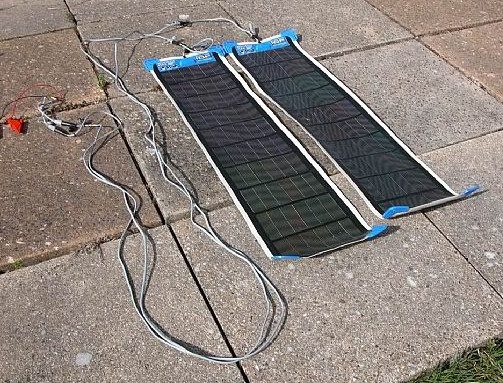Forum,
We have a trip pending from France to Senegal over Spain, Marocco, Mauretania and back, in a SEP. As opposed to many threads on this forum which deal with water ditching scenarios, we are mainly concerned with having to do a (precautionary) landing in the desert, away from civilization.
This is the emergency gear we plan to carry:
What are we missing? What is over-the-top?
Any advise welcome.
Not “2 large jugs”, but as much water as you can fit in your aeroplane. With enough water and some muesli-bars you can survive for weeks without needing anything else.
Alternatively you can take a water purifier (google for “Katadyn”) if you fly in place where natural water can be found.
My top 5 items on your list would be:
1. Water
2. Water
3. Water (or water purifier)
4. Medical kit (a big one!)
5. Emergency blankets
AK47 
That’s only partly tongue in cheek.
I would carry two PLBs, both with GPS. There is a general issue with devices which don’t get exercised in normal use: they often don’t work when you need them.
I also used to carry a roll-up solar panel, which could recharge the battery (adequately) in a day.

It weighs about 2kg and comes in a nice plastic cylinder package. That particular model is no longer made though; I did look for it recently. The open circuit voltage is about 50V in full sun and it puts about 1-2A into a 24V battery. Funnily enough it will also power a small soldering iron.
But, as with my AK47 suggestion (which will land you in jail if they catch you), it depends on where you are actually going i.e. how far away from the beaten track. There is a fair bit of traffic down there, especially from France where there is the common language / historical / colonial aspect.
Edit: add a solar phone charger that actually works (the small toy ones don’t charge anything beyond a Nokia 6310). The 3rd World can sometimes have a suprisingly good data coverage (well for sure it will be better than the UK countryside  ). And a decent quality USB power pack – example – because by the time you crash land, your phones will all have been switched on for some hours and will be half flat.
). And a decent quality USB power pack – example – because by the time you crash land, your phones will all have been switched on for some hours and will be half flat.
Peter wrote:
But, as with my AK47 suggestion…
Some years ago in that region a German antarctic reseach plane was shot down by rebels. I guess an AK47 would not have helped them much. But if you make it to the ground alive you might be able to shoot a few rebels before they finally get you (and they will in any case).
Regarding the PLBs: If the aircraft is fitted with a removable ELT (many aircraft in Europe have one) then one extra PLB should be enough. Once south of Spain I have my doubts if anyone will come to your rescue, with or without ELT/PLB.
For the water, I would take a lot of small bottles (as much as you can carry). It’s easy and cheap to get, and in case you crash and some rupture, a lot will probably be intact, while with 2 tanks, you have a good chance they both rupture.
The small bottles are also potentially easier to carry if you have to walk, and easier to manage in case someone is on the ground / injured or something like that. You can also have a better idea of quantity / rationing.
I would buy either a PLB, a Delorme Inreach, Iridium GO! or (cheapest option): Spot Messenger.
They all come with a worldwide rescue service (either an extra or included for free) and with these devices, you can send your track from within our Flight Plan app to users, family and friends.
That way, you can stay in contact and if lost, people know where to search for you. See: http://www.aeroplusaviation.com/aircraft-tracking
For the Spot Messenger Gen 3 the GEOS rescue service costs about 18 US$ p/year if I remember well.
Water is probably the most important item.
I would check whether each of the countries concerned has any specific requirements.
My experience of driving through the Sahara (many years ago, when it was safe for roumis to gas up a company R6 and trundle from Annaba down to Tam for a long weekend) is that although it is not what we recognise as “civilisation”, there are so many people living in the desert that finding a private spot to attend to nature was far from easy…
As far as your list goes, I would carry many small water containers rather than a few large ones, and plenty of warm clothing and blankets. Also some small gifts (even just soap, aspirin, or whatever), to thank local people who have little but offer it all.
Understand that if you admire someone’s possession, he will give it to you, so be prepared to give something back.
Oh, and if you put down in a wide, flat smooth place, don’t sleep there.
@Jacko : why not sleeping there?
Good point on the smaller water bottles.
I will look into the charging the batteries with sunlight.
I will bring a large capacity lithium battery for the iphones & ipads.
I personally use a goal zero with 2 solar panels. When I am in a hotel or close to electricity, I can charge the Sherpa 100 power pack with juice from the wall. See: http://www.goalzero.com/power-packs
Then, when no electricity is available, I use 2 solar panels to charge the Sherpa 100 in a matter of several hours. With a fully charged Sherpa 100, I can charge several iPhones, iPads and even my Macbook Pro.
